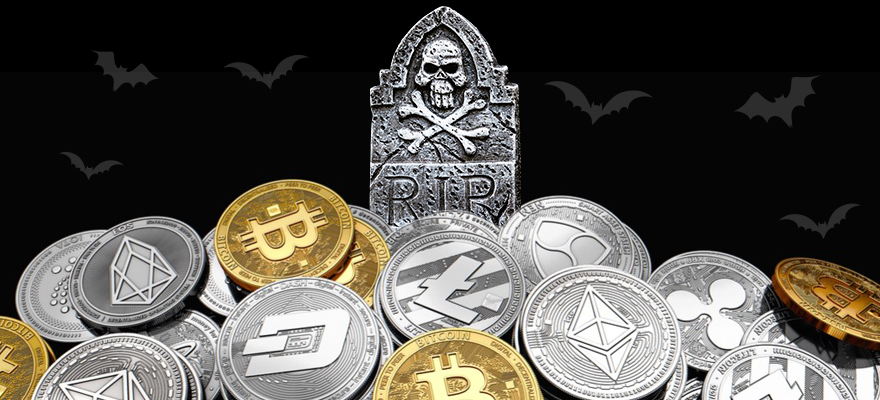Contents:


Ethereum 1.0 was a single large chain that was governed by the entire network. Sure, we saw some occasional minor forksin the past, but overall, the chain was designed to be a single entity. These changes will contribute to positive shifts in Ethereum performance. Buying Ethereum ahead of each new upgrade might not be the most successful strategy. The Coinbase Wrapped Staked ETH will have several uses, including selling and transferring staked ETH as well as using it as collateral in DeFi protocols.
At the end of Phase 1, the shards are connected full-fledged and to validator networks. They can operate safely and quickly, keeping the entire system synchronized. The original pre-upgrade chain will still work simultaneously with ETH 2.0. As of the end of 2022, Ethereum still maintains its leadership in the industry, hosting a huge number of dApps. The native Ethereum ETH token is the second digital asset by capitalization in the cryptocurrency market. At the end of November 2022, the total value of all ETH coins exceeded $155 billion.
We help enterprises, governments, non-profits, and startups across the globe build, test, and deploy public and private blockchain solutions. Responsible for transaction bundling, execution, and state management. This layer is already represented by clients that Ethereum uses daily, such as Geth, OpenEthereum, Hyperledger Besu, and Nethermind.
What Is Ethereum 2.0? – Forbes Advisor – Forbes
What Is Ethereum 2.0? – Forbes Advisor.
Posted: Thu, 15 Sep 2022 07:00:00 GMT [source]
A summary of key terms and definitions relating to Ethereum 2.0 and staking on the beacon chain in 2020 and beyond. Ethereum 2.0 will primarily benefit the scalability, throughput, and security of the Ethereum public mainnet. Ethereum 2.0 will not eliminate any of the data history, transaction records, or asset ownership of the Ethereum 1.0 chain. Stakers will be unable to make withdrawals on their staked ETH 6-12 months after the Merge. In what will be known as the Shanghai upgrade, users will be able to withdraw staked ETH, with a daily withdrawal limit of 40,000 ETH per day (out of ~13 million staked). While still requiring significantly lower energy levels than Bitcoin, Ethereum hasn’t escaped scrutiny for the high energy costs under its current Proof-of-Work model.
In Phase 1.5, the legacy Ethereum network will change to proof-of-stake and transition to Ethereum 2 as a shard. Existing ETH tokens become fully-fungible and transactional again. The new Shanghai update is really all about unlocking the Ethereum that validators have staked on the blockchain.
Why do I need to have funds at stake?More
It will change the way Ethereum’s network is secured, allowing for a much higher transaction throughput as well as significantly reduced transaction costs. Plus, Eth2 will reduce Ethereum’s issuance rate from 4% to 0.4% annually. Paired with the fee burn EIP-1559 has implemented, Ethereum is likely to become more scarce over time. The short answer is no, but it could lead to decreased gas fees in the future.
- PoS is a consensus mechanism that relies on validators and staked ETH for the continuation of blocks on the blockchain, and is necessary for sharding.
- The offers that appear in this table are from partnerships from which Investopedia receives compensation.
- CFDs attract overnight costs to hold the trades (unless you use 1-1 leverage), which makes them more suited to short-term trading opportunities.
It will enable cheaper transactions while maintaining Ethereum’s security. In Ethereum’s current proof of work scheme there is heavy reliance on high output graphics cards. Not only are these expensive to replace but also reliance on these creates unseen dependencies on supply chain dynamics. Contrastingly, after The Merge a common laptop can be used to participate in securing the network so hardware requirements are much easier to obtain.
When can I withdraw my staked ETH?More
After that, the only thing left will be merging Ethereum mainnet. Etherem’s move to proof of stake is also called Ethereum 2.0 or “The Merge”. As you may have noticed, there are many ways to participate in Ethereum staking.
In Proof-of-Work, on the other hand, miners have a greater incentive to instantly cash in and sell their block rewards. Broadly speaking, sharding is when an entire dataset is split into portions that represent the whole. With the Merge, the current Ethereum chain becomes a shard of the whole, in a chain of 64 parallel shard chains. While the initial Merge won’t do much to lower gas fees, sharding will help in this regard. The Merge itself refers to the joining of the current Ethereum mainnet with the Beacon Chain. In preparation for the Merge, several testnets were merged with the Ethereum mainnet.
Here we’ll compare some of the risks, rewards and requirements of the different ways you can stake. Third parties are building these solutions, and they carry their own risks. Liquid staking enables easy and anytime exiting and makes staking as simple as a token swap. This option also allows users to hold custody of their assets in their own Ethereum wallet. Many of these options include what is known as ‘liquid staking’ which involves an ERC-20 liquidity token that represents your staked ETH.
Earn rewards while securing Ethereum
The randomness in validator selection is important to ensure that the system is not biased toward one specific participant. Unlike the classic Ethereum, which could handle only 15 transactions per second, Ethereum 2.0 is much more efficient, completing up to 100,000 transactions each second. Each shard is basically a new chain connected to the older Ethereum chain to link with the previously recorded data. Moreover, all of them will work the same way as the old one did, except for the difference that now workload has been distributed onto multiple databases. Sharding is a common phenomenon in the general programming world, in which the data is distributed in several machines to improve the processing speed. Similarly, in the case of Ethereum, it has been done by introducing 64 shards.
Created in 2015, Ethereum became a new milestone in the history of the blockchain industry. It was the first blockchain platform for smart contracts and decentralized applications . The emergence of the field of decentralized finance and such projects as MakerDAO, Compound, and Uniswap is largely a credit to Ethereum. The staking process entails locking tokens, keeping them from being used, in return for the privilege of participating in the network’s consensus and validation measures. Those who stake their ether receive rewards through fees paid in ETH.
Binance Staking – Ethereum (ETH) 2.0
To protect the blockchain from scams and frauds, any validator who is caught authenticating illegitimate transactions faces a reduction in his staked funds. Ethereum’s transition to PoS has not addressed the network’s expensive gas fees. According to Ethereum, scaling solutions will be used to make transactions on the network cheaper. Before 15 September 2022, Ethereum used the proof-of-work consensus mechanism.

Ethereum 2.0 is not a new asset, but is the name given to a set of updates coming to the Ethereum Network. The initial updates will see Ethereum merging with the Beacon Chain and transitioning from a proof of work consensus to proof of stake . Over the next few years, additional updates such as sharding will roll out. A validator has the ability to propose and attest to blocks for the network. To prevent dishonest behavior, users must have their funds at stake. Staking is a means to keep you honest, as your actions will have financial consequences.
A new technological upgrade for Ethereum might not have the impact some investors are expecting.
Rollups take transactions off the chain and where they are checked, but it is costly in terms of processing by nodes because they are permanently recorded on the blockchain. This would bloat the blockchain, slowing the network or causing node operators to need much more powerful equipment. Blobs will not remain on the blockchain indefinitely, removing the bloat that could occur.

This addresses issues of https://cryptolisting.org/ and transaction speed and stops one app from slowing down the network. Participants who have been granted the ability to become validators in exchange for the ETH they have invested in the system can be rewarded for each block they successfully verify and approve. By running their own nodes, participants can become block validators. With substantially less energy and less expensive hardware, stakers will not require as much ETH to be incentivized to participate in securing the network.
Proof of Stake is an upgrade from Ethereum 1.0’s current Proof of Work consensus model and allows for improved security and scalability. PoS is a consensus mechanism that relies on validators and staked ETH for the continuation of blocks on the blockchain, and is necessary for sharding. Validators are people who elect to continue the blockchain by depositing (or “staking”) 32 ETH into the deposit contract. On a continuous basis, validators are randomly selected from the pool of all validators to be given the opportunity to create the next block. Should a validator successfully validate a block, they will receive an ETH reward. If a validator attempts to compromise the truthful continuation of the blockchain, their deposit will be ‘slashed’ – meaning they will lose some or all of their 32 staked ETH.
ETH 2.0 could be more valuable than ETH because it has many advantages compared to “Ethereum killers.” Thus, some voices in the crypto space say that Ethereum 2.0 is potentially a good investment. That means you do not need to panic about your Ethereum investments. Economic penalties for misbehavior in the form of “slashing” make it exponentially more costly for bad actors to attempt attacks as compared to proof of work. Attackers can actually be removed from the pool of stakers and only be reinstated after a few weeks. This is in addition to the economic penalties for submitting bad blocks and other forms of misbehavior. See how Ethereum can open up new business models, reduce your costs and future-proof your business.
The reason for this misconception is that at one point “The Merge” was going to include sharding but this has been separated into its own upgrade. In proof of stake all the nodes are playing a coordination game instead of a competitive one. This unlocks new ways to scale with the building blocks in place for sharding. With the Beacon Chain coordinating between all the validators, it is a small adjustment to start coordinating consensus on multiple shards of the network. Rewards are given for actions that help the network reach consensus. You’ll get rewards for running software that properly batches transactions into new blocks and checks the work of other validators because that’s what keeps the chain running securely.
A case filed by the US Securities and Exchange Commission against crypto investment trader Ian Balina hinted that the SEC could well consider the coin to fall under its remit. That’s part of another Ethereum upgrade slated to occur after an estimated six to 12 months. Responsible for the validating blocks, also known as the Beacon Chain. This consensus-layer has been running smoothly for more than 6 months, with 155,663 validators collectively staking 4,981,046 ETH. The Beacon Chain The Beacon Chain boosts the security of the network by randomly assigning validators in order to prevent dishonest actors from attacking the system. In addition, malicious validators are punished for harmful actions by having their staked ETH slashed.
These paths target a wide range of users and ultimately are each unique and vary in terms of risks, rewards, and trust assumptions. Some are more decentralized, battle-tested and/or risky than others. We provide some information on popular projects in the space, but always do your own research before sending ETH anywhere. Apart from being sustainable, the PoS mechanism also helps Ethereum 2.0 become more decentralized than the older Ethereum. Since users don’t have to buy expensive rigs anymore, anyone with a certain amount of ETH can participate in mining new tokens. As a result, more user participation leads to more decentralization.
Best Twitter threads of the day – April 13th – Cryptopolitan – Cryptopolitan
Best Twitter threads of the day – April 13th – Cryptopolitan.
Posted: Thu, 13 Apr 2023 07:00:00 GMT [source]
This was the whole point of what is vaulty but BTC just doesn’t have the functionality to facilitate many kinds of financial tools like lending, borrowing, staking and more. Ethereum is one of the largest cryptocurrencies by market capitalization, second only to Bitcoin. While both Bitcoin and Ethereum use blockchain technology to secure their networks, they aren’t direct competitors. Bitcoin aims to be a store of value –– you can think of Bitcoin as digital gold. Ethereum is touted as a “general purpose blockchain” which can host limitless functions. As of now, decentralized finance applications are the most popular use case for Ethereum.
